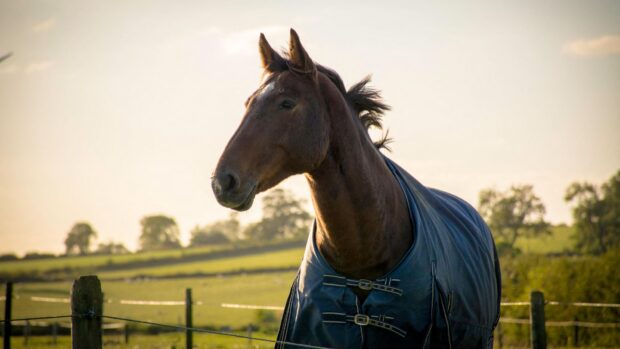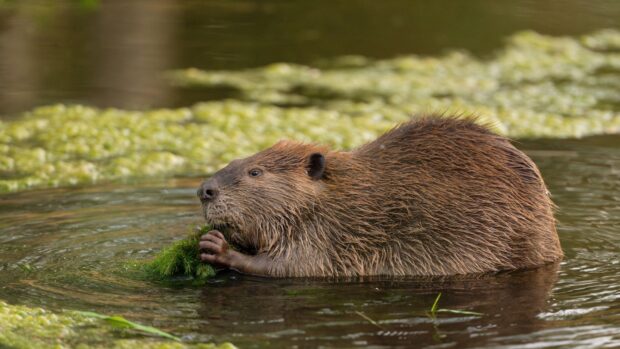If you’ve ever been the proud owner of a post and rail fence, you’ll know that as the weather starts to turn some horses embrace their inner beaver and start chewing any wood in sight.
Wood chewing is a common issue, and it can damage not only your fencing and stabling but also your horse’s well-being. It can also be an indicator that all might not be right with your horse’s diet or routine.
To help keep your horse in top condition, and to keep those fences picture-perfect, we’ve created this comprehensive guide about wood chewing…
Why is my horse chewing wood?
Horses chew wood for a variety of reasons, but it’s most commonly a behavioural response born out of boredom or a coping mechanism to deal with stress.
Research shows that wood chewing correlates strongly with the amount of time a horse is stabled and the amount of long-stem forage available. When horses are stabled or their grazing is restricted, they’re unable to perform species-appropriate behaviours.
Horses are grazing animals and have an instinctive need to be chewing. They’re not only doing this to consume food. Horses are looking to ingest long-stem fibre and produce saliva to help neutralise stomach acid.
Unlike humans, horses are continuously secreting stomach acid. Prolonged periods without producing saliva can lead to issues like gastric ulcers. That’s why if horses don’t have access to long-stem fibrous forage, they’ll start to chew on something else.
If horses spend a lot of time in their stable, they cannot move around and interact with other horses as they’d naturally do. A lack of social interaction can lead to increased stress levels and boredom. Chronic stress and boredom have both been shown to lead to vices like wood chewing.
Over the winter it can be much harder to ensure regular turnout and good grazing, which is why wood chewing is often associated with cold, wet weather. But even if your horse is having to stay in more, there are things you can do to stop them chewing wood.
How to stop my horse chewing wood?
It’s important to catch wood chewing early because once the behaviour becomes established it’s much more difficult to stop.
The first step to preventing wood chewing is to review your horse’s management. Ensure your horse is getting adequate turnout, with good grazing and company. If your grazing is restricted over winter, replacing some of that need for movement through frequent exercise may help.
Studies have shown that horses in exercise are less prone to chewing wood. As long as you wrap up warm and avoid overtraining, nice long hacks with other horses are an invaluable addition to your winter routine.
You should also provide more long-stem forage, like hay. Increasing your horse’s access to forage enables them to engage in more natural grazing behaviours. Using multiple hay nets or slow feeder boxes helps to regulate intake and allows the horse to trickle feed as they would in the field.
If feeding more forage isn’t possible, boredom busters that dispense high-fibre food help to mimic foraging behaviours. Horse-safe toys will also help to stave off boredom and keep your horse occupied.
Wood chewing deterrents
If you’ve made all the management changes you can and your horse is still chewing wood, it might be time to explore deterrents. The most popular deterrents are products that are sprayed or wiped onto wooden surfaces to make them taste unpleasant.
Although wood chewing and crib-biting, or windsucking, are not the same behaviour, the deterrents used to prevent them are often the same.
Topical deterrents, such as Cribox (which is available on Viovet), are the most cost-effective way to prevent wood chewing, but it’s important to ensure that it’s safe for horses to consume and that you follow the instructions provided.
Chew guards on stable doors, or metal panels on ledges, physically prevent horses from chewing wood but can be expensive to install. Likewise, electric taping running along the top of fencing in the field can stop horses from getting to the wood.
If you have any areas that cannot be taped, such as upright posts in a field shelter, corrugated drain pipes can be wrapped around them as long as they are safe and secure.
However, it’s important to bear in mind that restricting a horse’s access to wood won’t necessarily address the underlying cause of the behaviour and should be balanced with good management practices.

Hydraphane Cribox | Viovet.co.uk
Cribox is an easy cost-effective way to prevent wood chewing. This paint is a dark brown colour but it is also available as a clear, colourless liquid.
- To stay up to date with all the breaking news throughout London International and more, subscribe to the Horse & Hound website
You may also be interested in:

Top groom Alan Davies’ expert tips on managing horses over winter

12 warm heavyweight turnouts for the winter

Subscribe to Horse & Hound magazine today – and enjoy unlimited website access all year round






